Check out Resources on Nutrient Pollution and Best Practices. Click any link to view full resource.
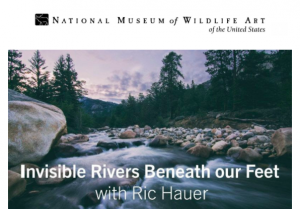
Invisible Rivers Beneath our Feet with Dr. Ric Hauer
National Museum of Wildlife Art and Yellowstone to Yukon Conservation Initiative
Dr. Ric Hauer’s presentation of “Invisible Rivers Beneath our Feet” about gravel-bed ecosystems with a special introduction by Dr. Harvey Locke.
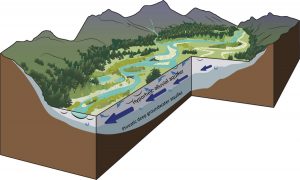
Gravel-bed river floodplains are the ecological nexus of glaciated mountain landscapes
Science Advances Vol 2, No. 6 03 June 2016
In the glaciated regions of the Rocky Mountains, essentially from the Yellowstone area in northwestern Wyoming, United States, to Yukon, Canada, gravel-bed rivers are disproportionately important to regional biodiversity and to landscape-scale ecological integrity. Research conducted in this mountain region, across a wide variety of fields in ecology and diverse taxa, has highlighted the importance of these gravel-bed rivers to an unexpectedly high proportion of the region’s aquatic, avian, and terrestrial species. Although gravel-bed river floodplains play a disproportionately important role in sustaining native plant and animal biodiversity, they have also been disproportionately affected by human infrastructure and activities.
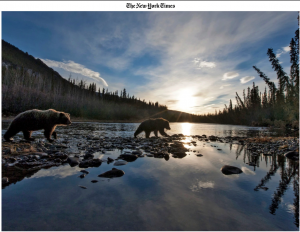
An Ecosystem’s Lifeblood, Flowing Through Gravel
The New York Times
“A river doesn’t just flow down the channel,” said F. Richard Hauer, a professor of stream ecology at the University of Montana and the lead author of the paper. “It flows over and through the entire flood plain system, from valley wall to valley wall, and supports an extraordinary diversity of life…A river is a huge, huge biodiversity engine with multiple parts. If you keep taking out parts, pretty soon the engine stops.”
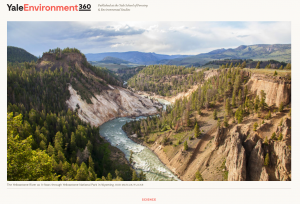
Yale Environment 360: A New Way of Understanding What Makes a River Healthy
Published at the Yale School of Forestry & Environmental Studies
A recent outbreak of a deadly fish parasite on the Yellowstone River may have seemed unremarkable. But a new wave of research shows the episode was likely linked to the cumulative impact of human activities that essentially weakened the Yellowstone’s “immune system.”
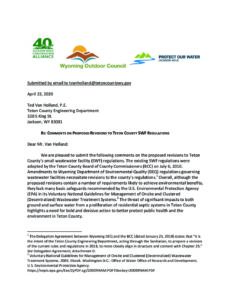
COMMENTS ON PROPOSED REVISIONS TO TETON COUNTY SMALL WASTEWATER FACILITY REGULATIONS
April 23, 2020
Comments submitted on behalf of Protect Our Water Jackson Hole, Wyoming Outdoor Council, and the Jackson Hole Conservation Alliance on the proposed revisions to Teton County’s small wastewater facility (SWF) regulations. The existing SWF regulations were adopted by the Teton County Board of County Commissioners on July 6, 2010. Amendments to WY Department of Environmental Quality regulations governing wastewater facilities necessitate revisions to the county’s regulations. Overall, although the proposed revisions contain a number of requirements likely to achieve environmental benefits, they lack many basic safeguards recommended by the U.S. Environmental Protection Agency in its Voluntary National Guidelines for Management of Onsite and Clustered (Decentralized) Wastewater Treatment Systems. The threat of significant impacts to both ground and surface water from a proliferation of residential septic systems in Teton County highlights a need for bold and decisive action to better protect public health and the environment in Teton County.
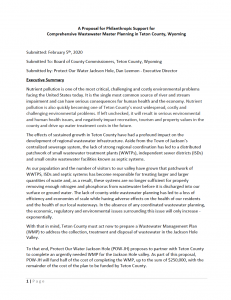
Original Proposal for Philanthropic Support for Comprehensive Wastewater Master Planning in Teton County, Wyoming
February 11, 2020
As our population and the number of visitors to our valley have grown the patchwork of wastewater treatment plants, independent sewer districts and septic systems has become responsible for treating larger and larger quantities of waste and, as a result, these systems are no longer sufficient for properly removing enough nitrogen and phosphorus from wastewater before it is discharged into our surface or ground water. The lack of county-wide wastewater planning has led to a loss of efficiency and economies of scale while having adverse effects on the health of our residents and the health of our local waterways. In the absence of any coordinated wastewater planning, the economic, regulatory and environmental issues surrounding this issue will only increase – exponentially.
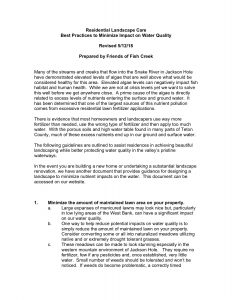
Residential Landscape Best Practices to Minimize Impact on Water Quality
Many of the streams and creeks that flow into the Snake River in Jackson Hole have demonstrated elevated levels of algae that are well above what would be considered healthy for this area. Elevated algae levels can negatively impact fish habitat and human health. While we are not at crisis levels yet we want to solve this well before we get anywhere close. A prime cause of the algae is directly related to excess levels of nutrients entering the surface and ground water. It has been determined that one of the largest sources of this nutrient pollution comes from excessive residential lawn fertilizer applications.
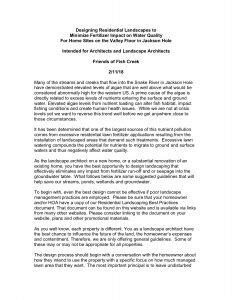
Designing Residential Landscapes to Minimize Fertilizer Impact on Water Quality For Home Sites on the Valley Floor in Jackson Hole
Intended for Architects and Landscape Architects
Many of the streams and creeks that flow into the Snake River in Jackson Hole have demonstrated elevated levels of algae that are well above what would be considered abnormally high for the western US. A prime cause of the algae is directly related to excess levels of nutrients entering the surface and ground water. Elevated algae levels from nutrient loading can alter fish habitat, impact fishing conditions and create human health issues. While we are not at crisis levels yet we want to reverse this trend well before we get anywhere close to those circumstances.
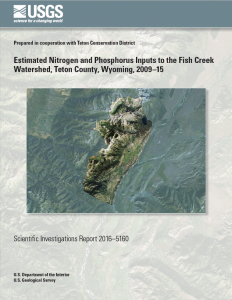
Estimated Nitrogen and Phosphorus Inputs to the Fish Creek Watershed, Teton County, Wyoming, 2009–15
Scientific Investigations Report 2016–5160
By Cheryl A. Eddy-Miller, Roy Sando, Michael J. MacDonald, and Carlin E. Girard
Prepared in cooperation with Teton Conservation District
Scientific Investigations Report 2016–5160
U.S. Department of the Interior
U.S. Geological Survey
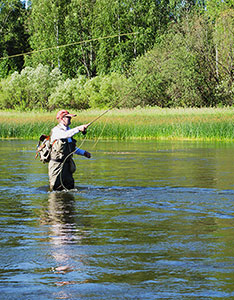
Fish Creek – A Situation Assessment by Flitner Strategies
August 2014
Generally, the first step with any collaborative solutions process is the completion of a situation assessment that identifies the problem (e.g., environmental contamination) and key stakeholders (community residents, organizations, businesses, government representatives, etc.), envisions possible solutions, set goals, and develops a strategy that identifies the actions needed to produce desired results. In August 2014, Flitner Strategies released the report Fish Creek: A Situation Assessment. The situation assessment’s purpose was to gauge opinions and perceptions regarding changes to Fish Creek resulting from nutrient loading. The report goes on identify opportunities for developing a collaborative approach to stewardship of the watershed.